This one's a little different. While it covers the attack, the details are in refuting myths, adding to the story, and expanding what we know. Too much stuff to cover here, but things like the third wave, bombing the fuel tanks and repair facilities would cripple our navy, the attack was a runaway success, it was brilliantly planned...those are all crushed.
He adds lesser known topics like the mini sub attack, aerial defenses, AAA fire, the fleet being out of Pearl instead of in Pearl during the attack, and the Japanese high command as strategic geniuses.
Where the book gets interesting, or dull depending upon what interests you, is Zimm leans into statistics and statistical analysis. The book is chock full of charts making his points and refuting others. He also uses modern terms to describe some missions, but this isn't revisionist history, more of a "this is what they called it then, here is what we call it now."
To expand a point I made elsewhere, Zimm uses Japanese and American data to destroy Mitsuo Fuchida's entire story. Recent years have seen Japanese records, particularly the TROM, Tabular Records of Movement. An example:
Imperial Cruisers
The Imperial Japanese Navy Page | Nihon Kaigun
Other sets include the carrier deck logs which are quite detailed, bios of lesser known players, and other documents eventually translated into English. A lot of info has developed over the last 30 years. Zimm uses this in detail and I'll add another mention of the Unauthorized History of the Pacific War which also uses this "new" documentation.
Zimm conclusively shows that Fuchida's memory is wrong, if not outright fabrications to inflate his importance, his genius, and to make some coin after the war.
I could ramble on, but this is a great book, a bit dry with some of the statistical stuff unless you're into that, but also easily skimmed so you can get back to the juicy parts. He does a great job of explaining things like low order detonations, battleship construction/ damage control, fighter sorties...tedious stuff that he puts in layman's terms.
4.5 out of 5 lucky breaks. I'd give it a 5th, but the statistics might be a bit much for some readers even if the statistics help make his cases.
He adds lesser known topics like the mini sub attack, aerial defenses, AAA fire, the fleet being out of Pearl instead of in Pearl during the attack, and the Japanese high command as strategic geniuses.
Where the book gets interesting, or dull depending upon what interests you, is Zimm leans into statistics and statistical analysis. The book is chock full of charts making his points and refuting others. He also uses modern terms to describe some missions, but this isn't revisionist history, more of a "this is what they called it then, here is what we call it now."
To expand a point I made elsewhere, Zimm uses Japanese and American data to destroy Mitsuo Fuchida's entire story. Recent years have seen Japanese records, particularly the TROM, Tabular Records of Movement. An example:
Imperial Cruisers
The Imperial Japanese Navy Page | Nihon Kaigun
Other sets include the carrier deck logs which are quite detailed, bios of lesser known players, and other documents eventually translated into English. A lot of info has developed over the last 30 years. Zimm uses this in detail and I'll add another mention of the Unauthorized History of the Pacific War which also uses this "new" documentation.
Zimm conclusively shows that Fuchida's memory is wrong, if not outright fabrications to inflate his importance, his genius, and to make some coin after the war.
I could ramble on, but this is a great book, a bit dry with some of the statistical stuff unless you're into that, but also easily skimmed so you can get back to the juicy parts. He does a great job of explaining things like low order detonations, battleship construction/ damage control, fighter sorties...tedious stuff that he puts in layman's terms.
4.5 out of 5 lucky breaks. I'd give it a 5th, but the statistics might be a bit much for some readers even if the statistics help make his cases.
